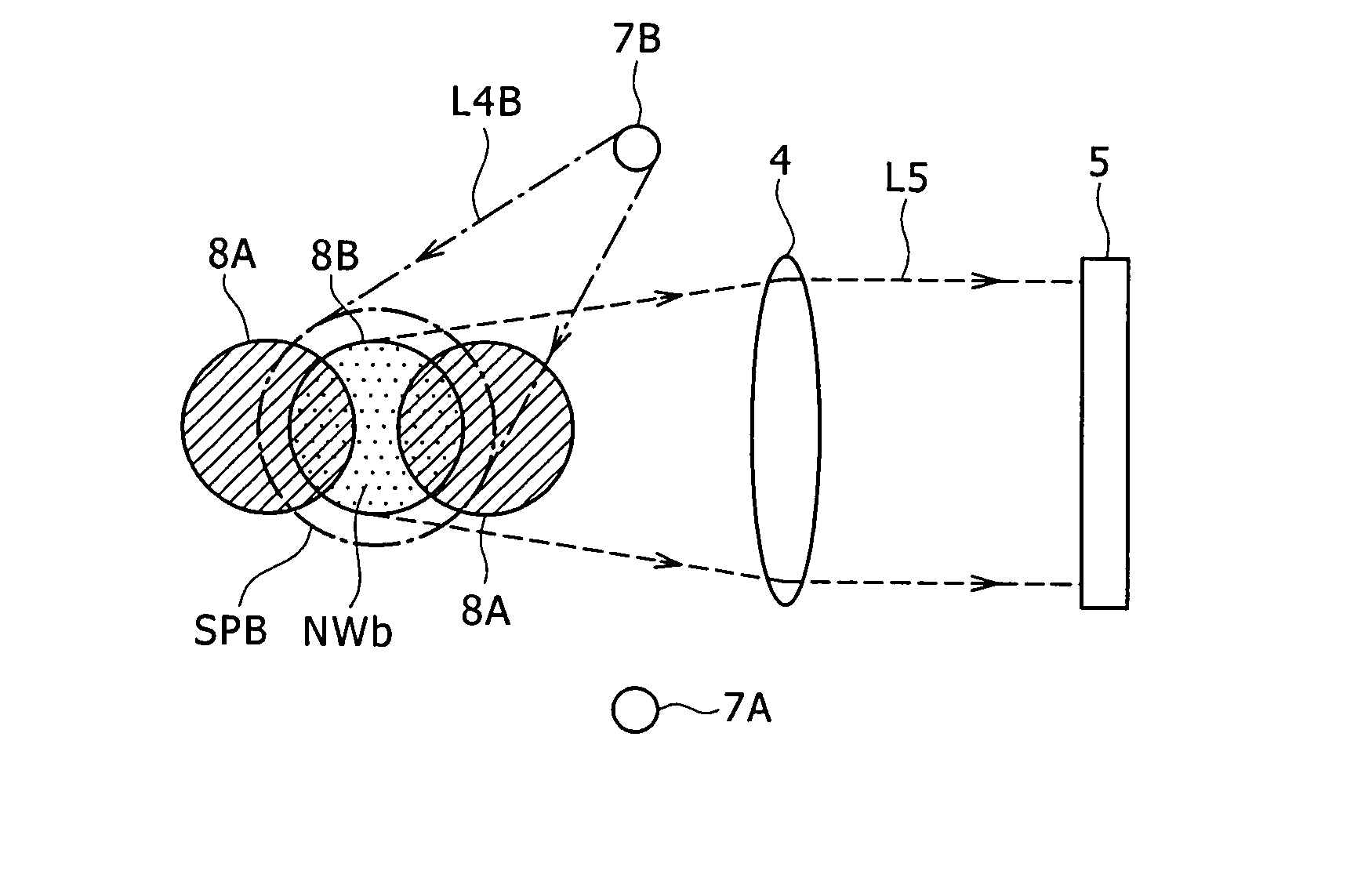Recording medium, reproducing apparatus, and reproducing method
a technology of reproducing apparatus and recording medium, which is applied in the direction of recording/reproducing/erasing using optical interference patterns, digital storage, instruments, etc., can solve the problems of difficult to produce a large number of duplicates according to the contact copying process, large size and high cost, and difficult to manufacture hologram readers inexpensively in a simple structure. , to achieve the effect of reducing the distance between the holograms, increasing the recording density, and increasing storage capacity
- Summary
- Abstract
- Description
- Claims
- Application Information
AI Technical Summary
Benefits of technology
Problems solved by technology
Method used
Image
Examples
Embodiment Construction
[0045]The embodiments of the present invention will be described below in the following order of topics:
[0046][1. Recording and reproducing process of hologram memory]
[0047][2. Hologram memory according to the embodiment]
[0048][3. Reproducing apparatus arrangement]
[0049][4. Reproducing operation on hologram memory]
1. Recording and Reproducing Process of Hologram Memory
[0050]A basic recording and reproducing process of a hologram memory 3 according to an embodiment will be described below with reference to FIGS. 1A and 1B. FIG. 1A shows the manner in which data is recorded in the hologram memory 3. The data to be recorded is converted into image data in the form of a two-dimensional bar code, for example, as shown, and displayed as a two-dimensional page data image on a liquid crystal panel 1. When a laser beam L1 output from a predetermined light source and converted into a parallel beam passes through the liquid crystal panel 1 with the two-dimensional page data image being display...
PUM
 Login to View More
Login to View More Abstract
Description
Claims
Application Information
 Login to View More
Login to View More - R&D
- Intellectual Property
- Life Sciences
- Materials
- Tech Scout
- Unparalleled Data Quality
- Higher Quality Content
- 60% Fewer Hallucinations
Browse by: Latest US Patents, China's latest patents, Technical Efficacy Thesaurus, Application Domain, Technology Topic, Popular Technical Reports.
© 2025 PatSnap. All rights reserved.Legal|Privacy policy|Modern Slavery Act Transparency Statement|Sitemap|About US| Contact US: help@patsnap.com



